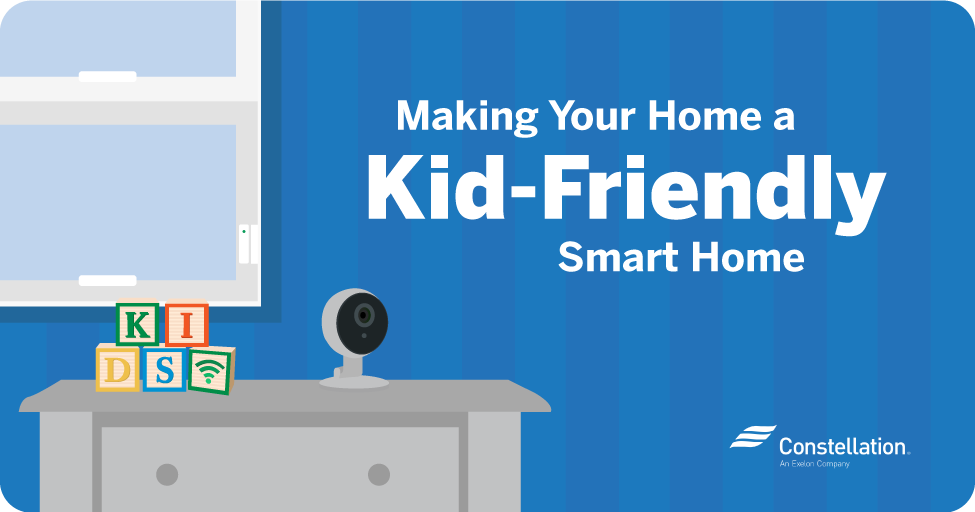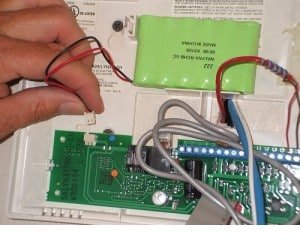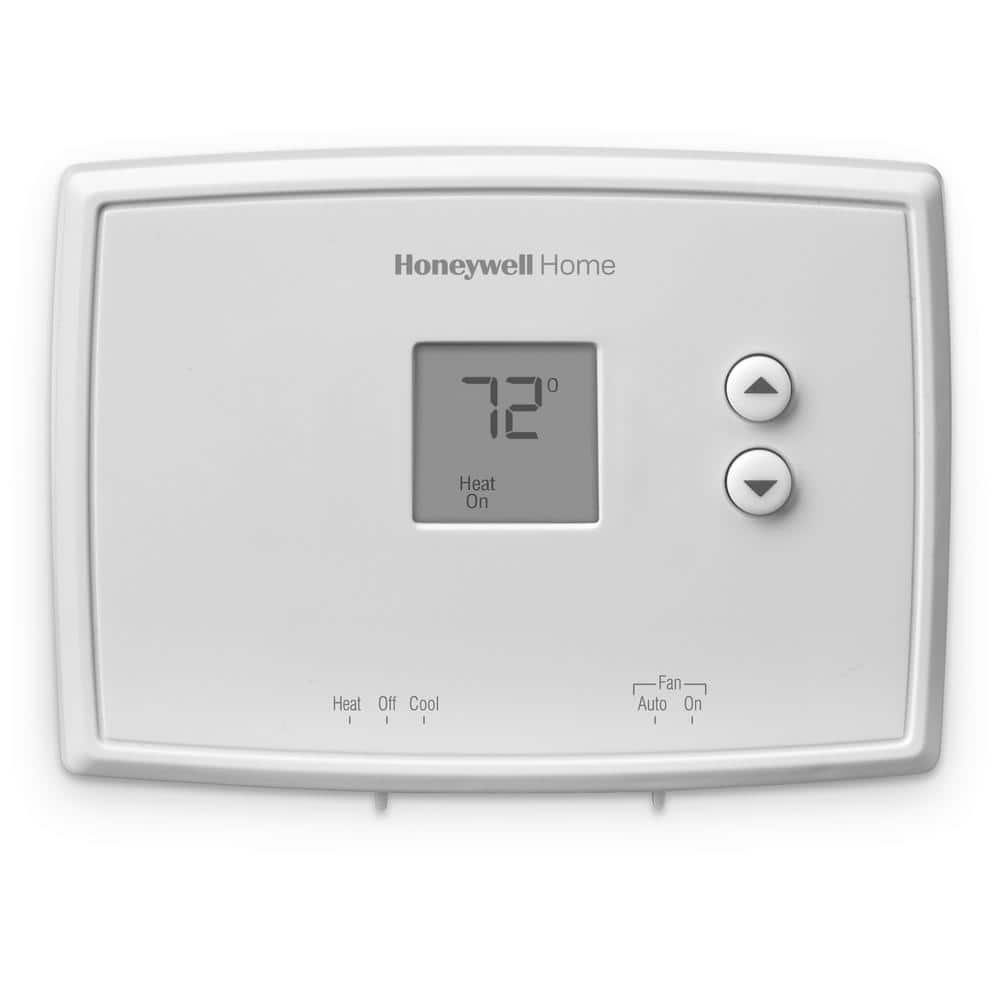Smart homes make life easier. But are they safe for kids?
Creating a kid-friendly smart home means merging technology with safety. It involves using gadgets that not only simplify daily routines but also ensure the safety and engagement of children. Imagine a home where lights adjust for bedtime stories, or where music plays softly for morning wake-ups.
With smart devices, parents can control these features from anywhere, ensuring kids have a safe and fun environment to grow in. The key is to choose technology that adds value without compromising safety. In this blog, we’ll explore how to create a smart home that is both innovative and secure for your little ones, making everyday life enjoyable and stress-free for the whole family.
Introduction To Kid-friendly Smart Homes
Smart homes are becoming more child-friendly with innovative technology. Devices like smart locks and voice assistants enhance safety and convenience for kids. Parents can easily monitor activities and ensure a secure environment, providing peace of mind and a nurturing space for children.
Imagine a home where your kids can safely interact with technology without constant supervision. Kid-friendly smart homes are becoming a reality, offering convenience and peace of mind for parents. These homes integrate smart devices designed with children’s safety and engagement in mind, ensuring a harmonious blend of tech and family life. But what makes a smart home truly kid-friendly?
Importance Of Safe Tech Environments
Creating a safe tech environment is crucial in today’s digital age. As a parent, you want to ensure your children are protected from online dangers. Smart homes offer security features like parental controls and restricted access to unsuitable content.
Safety goes beyond just content. Consider smart devices that prevent accidents around the house. Smart plugs can turn off appliances automatically, reducing the risk of burns or electrical shocks. Wouldn’t you feel more at ease knowing your home is not just smart, but also secure for your little ones?
Current Trends In Smart Home Technology
Smart home technology is evolving rapidly, with exciting trends focused on family-friendly solutions. Devices like interactive speakers and smart displays are becoming commonplace, offering educational games and activities tailored for kids. Imagine your child learning math through an engaging voice-activated game.
Voice assistants are another trend, enabling children to ask questions and get immediate answers. This can spark curiosity and foster learning. Smart lighting systems are also gaining popularity, allowing you to set schedules that help regulate your child’s sleep patterns. Have you considered how these trends could make your home a more nurturing environment?
As you explore the possibilities of a kid-friendly smart home, think about the practical benefits these technologies can bring to your family’s daily routine.
Choosing Safe Smart Home Devices
Select smart home devices that prioritize safety for children. Ensure features like parental controls and secure networks are included. Opt for products with easy-to-use interfaces to keep your family safe and comfortable.
Choosing safe smart home devices for kids is crucial. Parents aim to ensure their children’s safety in the digital world. With technology advancing, selecting devices that protect and educate is essential. Consider user-friendly gadgets that grow with your child. These devices should promote a safe and interactive environment.
Features To Look For
Smart home devices should prioritize safety features. Parental controls are a must-have. These controls help manage what your child accesses. Look for devices with privacy settings. This ensures personal data stays secure. Easy setup is also important. The device should be simple to install and use. Durability matters too. Choose gadgets that withstand rough handling. Voice control can enhance usability. It provides hands-free operation for young users.
Age-appropriate Technology
Select technology suitable for your child’s age. Younger children benefit from simple, interactive devices. These gadgets should teach basic skills. For older kids, look for more advanced options. Devices that support learning are valuable. Encourage creativity and exploration with age-appropriate tech. Look for products that evolve with your child’s needs. This ensures long-term use and engagement. Balance fun and learning for the best results.
Setting Parental Controls And Restrictions
Creating a kid-friendly smart home involves setting parental controls and restrictions. These tools help manage screen time and ensure safe online activities. Parents can customize settings to block inappropriate content, keeping children safe while enjoying their smart devices.
Setting up a smart home can be exciting and fun for families. But ensuring a safe environment for kids is crucial. Parental controls and restrictions play a vital role here. They help parents manage what children can access. This ensures a secure and child-friendly digital space. Let’s explore how to set these controls effectively.
Managing Screen Time
Balancing screen time is essential for healthy growth. Smart home devices can help with this. Parents can set limits on how long kids can use screens. Some devices allow setting specific hours for screen access. This helps maintain a routine and avoid excessive usage. Clear boundaries keep kids engaged in offline activities too.
Filtering Content
Kids are curious explorers. Filtering content ensures they view age-appropriate material. Smart home systems offer content filters. These filters block inappropriate sites and content. Parents can customize these settings based on age and interests. This keeps the online experience safe and worry-free. Parents gain peace of mind knowing their kids are protected.
Understanding and using these features is key. They empower parents to create a safe digital environment. Smart homes can be both fun and secure for kids.

Credit: blog.constellation.com
Enhancing Security With Smart Technology
Smart homes are evolving rapidly, especially with technology enhancing security. As a parent, you might wonder how these advancements can make your home safer for your kids. Smart technology offers innovative solutions, ensuring peace of mind and making everyday life easier. From smart locks to cameras, there’s a range of options to keep your family secure.
Smart Locks And Cameras
Imagine not worrying about lost keys or uninvited guests. Smart locks allow you to control access to your home from anywhere. You can grant access to trusted individuals, like babysitters or family members, without handing them physical keys. This provides convenience and ensures your kids are safe when they come home from school.
Smart cameras are equally beneficial. They offer real-time video feeds, letting you check on your kids while you’re away. Some cameras even have motion detection and alerts, so you’re instantly notified of any unusual activity. This can be particularly reassuring when your children are playing outside.
Privacy Settings For Families
It’s crucial to balance security with privacy. Smart devices often come with customizable privacy settings. You can decide who sees what and when, ensuring your family’s activities are not monitored excessively. This flexibility allows you to protect your home while respecting your children’s privacy.
Consider setting up zones in your home that restrict monitoring. This ensures that areas like bedrooms are off-limits to surveillance, providing a safe space for your kids. By customizing these settings, you maintain control over your family’s privacy.
When was the last time you reviewed your privacy settings? It might be time to check if they align with your family’s needs. Smart technology is a powerful ally, but only if used thoughtfully.
By embracing smart home security, you’re not just enhancing safety—you’re creating a nurturing environment for your children. How will you use these tools to protect what matters most?
Interactive And Educational Gadgets
In today’s digital age, children are surrounded by technology. Smart home gadgets are becoming increasingly popular. These devices not only entertain but also educate. Interactive and educational gadgets offer kids unique learning experiences. They make learning fun and engaging. Parents can find a variety of smart toys and tools. These gadgets foster creativity and knowledge in children.
Learning Through Smart Toys
Smart toys are reshaping how kids learn. These toys combine fun with learning. They use technology to teach different skills. Language, math, and problem-solving become exciting activities. Kids enjoy playing while gaining knowledge. Parents can choose from toys that suit their child’s interests. Smart toys adapt to a child’s learning pace. This makes the learning process personalized and effective.
Promoting Creativity With Tech
Technology boosts creativity in children. Interactive gadgets inspire imaginative play. Kids can create stories and art using these tools. Smart devices offer endless possibilities. Children can design games or build virtual worlds. These activities enhance creative thinking. Tech-based tools encourage kids to think outside the box. They develop unique solutions and ideas. Parents can support creativity with the right gadgets. These tools provide a platform for kids to explore and innovate.
Creating A Connected Home Environment
Creating a connected home environment for kids can be exciting and educational. Smart home technology offers endless possibilities. Devices can communicate and work together. This makes daily life easier and more fun for children. Parents can ensure safety while providing interactive learning experiences. Kids can enjoy a modern home where technology is at their fingertips.
Integrating Devices Seamlessly
Smart devices should connect without hassle. Choose gadgets that work well together. Compatibility is key for a smooth experience. Use a central hub to manage devices from one spot. This simplifies control and reduces confusion for young users. Avoid clutter and keep the interface easy to navigate. Children can learn to operate devices independently with a clear setup.
Maintaining Network Security
Network security is crucial in a smart home. Protect devices from unauthorized access. Use strong passwords for each device. Enable two-factor authentication where possible. Regularly update firmware to fix security issues. Teach kids about safe online practices. Keep the network private and secure. Parents can monitor usage to ensure safety. A secure network keeps the smart home functioning safely.
Teaching Kids About Technology
Explore a kid-friendly smart home to teach children about technology. Engage young minds with smart lights, speakers, and security. Encourage curiosity and understanding through interactive experiences.
Teaching kids about technology can be an exciting journey that empowers them with skills for the future. As smart homes become more common, it’s crucial to involve your children in understanding these innovations. By doing so, you can help them develop a healthy relationship with technology, ensuring they use it responsibly and creatively.
Explaining Smart Devices
Start by introducing your kids to the smart devices around your home. You might say, “Alexa, what’s the weather today?” and show them how the smart speaker responds.
Involve them in simple tasks like adjusting the smart thermostat or turning lights on and off using voice commands or a smartphone app.
As they see how technology can make everyday tasks easier, ask them what they think about these gadgets. This encourages curiosity and critical thinking.
Developing Digital Responsibility
Teaching digital responsibility is crucial. Discuss with your kids why certain devices have parental controls or why you monitor their screen time.
Use relatable examples, like how you wouldn’t eat candy all day, to explain balanced tech use.
Encourage them to ask questions and express their thoughts about the technology they interact with. Are there rules they think should change? How can they use smart devices to help others? Engaging in these discussions makes them active participants in their digital journey.
—
What experiences have you had with introducing technology to your kids? How do you ensure they understand and respect the digital world? Share your thoughts and join the conversation!
Balancing Tech Use With Offline Activities
Creating a kid-friendly smart home means balancing tech use with offline activities. Encourage children to explore nature, play games, and engage in creative projects. Smart technology can help manage screen time and promote healthier habits.
Balancing technology use with offline activities is essential for maintaining a healthy lifestyle, especially for children growing up in a digital age. While smart home devices can offer convenience and learning opportunities, it’s important to ensure that they don’t overshadow the benefits of physical play and family bonding time. Striking the right balance can help nurture creativity, improve physical health, and strengthen family connections.
Encouraging Physical Play
Incorporate daily routines that encourage kids to step away from screens. Consider setting up a designated play area with toys and games that stimulate imagination. Whether it’s building blocks, puzzles, or a craft corner, these tangible activities can offer a refreshing break from digital devices.
Invite your children to explore outdoor activities. Organize backyard games or trips to the park. Engaging in physical activities like soccer, tag, or simply running around boosts their energy and creativity while promoting fitness.
Think about limiting tech use during certain hours. Setting boundaries helps create a routine where children understand when it’s time to play outside. This not only helps in managing their screen time but also instills a sense of discipline.
Family Time Without Screens
Consider setting a “tech-free” time each evening. Use this opportunity to enjoy a meal together without the distraction of phones or tablets. This simple routine fosters communication and strengthens family bonds.
Plan weekly family activities that don’t involve screens. Board games, storytelling, or cooking a meal together can be fun and rewarding. These activities encourage teamwork and create lasting memories.
Ask yourself: What are your family’s favorite offline activities? Identifying shared interests can make screen-free time something everyone looks forward to. Encourage every family member to suggest an activity, fostering a sense of inclusivity and shared responsibility.
Balancing technology with offline activities isn’t about eliminating tech entirely. It’s about creating a harmonious environment where technology enhances life without overshadowing the joys of real-world interactions.
Future Innovations In Kid-friendly Tech
The world of technology is rapidly evolving, and smart homes are becoming more integrated into our daily lives. But what does this mean for families with children? Future innovations in kid-friendly tech promise a safer, more interactive environment for your little ones. Imagine a home where children can learn, play, and grow, all while interacting with the latest gadgets designed just for them. Let’s dive into what’s on the horizon for kid-friendly smart homes.
Emerging Trends
We’re seeing a surge in educational tech that’s both fun and engaging. Interactive screens and voice-activated assistants can now offer personalized learning experiences. Imagine your child asking Alexa to help with math homework or to read a bedtime story. These tools not only entertain but educate, fostering a love for learning from a young age.
Safety is another key trend. Smart cameras and sensors are being designed with kids in mind, ensuring they’re always safe without being invasive. Picture a smart camera that alerts you when your toddler wanders near the stairs, offering peace of mind without compromising privacy.
Predictions For Smart Home Evolution
Looking ahead, smart homes will likely become even more interactive for kids. Voice recognition technology may evolve to understand children’s unique speech patterns, making interactions smoother and more intuitive. Imagine your child being able to control the lights or play music just by asking.
Another exciting prediction is the rise of augmented reality in home learning. Think of your living room turning into a virtual dinosaur park or a space station, enhancing educational experiences beyond traditional methods. These immersive experiences could ignite curiosity and creativity like never before.
As these innovations unfold, consider how they might impact your family. How will you embrace these technologies while ensuring they’re beneficial and safe for your kids? It’s an exciting journey into the future, and your choices will shape how technology supports your child’s growth and development.

Credit: www.verizon.com

Credit: www.verizon.com
Frequently Asked Questions
What Is A Smart House For Kids?
A smart house for kids is a tech-enhanced home that features child-friendly automation and smart devices. It ensures safety, convenience, and interactive learning through voice-activated lights, smart locks, and educational apps. Parents can manage home settings remotely, offering a secure and engaging environment for children.
Can A Kid Have A Smartwatch Without A Phone?
Yes, many smartwatches for kids can operate independently without a phone. They often have features like GPS, messaging, and fitness tracking. Some models come with built-in SIM cards, allowing calls and texts. Always check compatibility and features before purchasing.
How Much Does A Smart House Cost?
Smart house costs vary widely from $10,000 to $150,000. Factors include size, technology, and features. Basic systems are cheaper, while advanced setups with automation, security, and energy management increase expenses. Proper planning helps manage costs effectively. Consult professionals for a tailored estimate based on needs and budget.
How To Design A Kid Friendly Home?
Create safe spaces with soft furniture and rounded edges. Use washable, durable materials for easy cleaning. Design interactive areas with toys and books accessible. Install child-proof locks on cabinets and doors. Ensure adequate lighting and supervision for safety.
Conclusion
Smart homes can be safe and fun for kids. Simple devices make life easier. Parents gain peace of mind with added security features. Smart lights and speakers entertain and educate. Voice controls are easy for young ones to use. You can create a comfortable environment for the whole family.
The right gadgets can make home life smoother. Remember to choose age-appropriate technology. Balance tech use with family time. Creating a kid-friendly smart home is achievable. Enjoy the benefits together. A smart home is a happy home.















